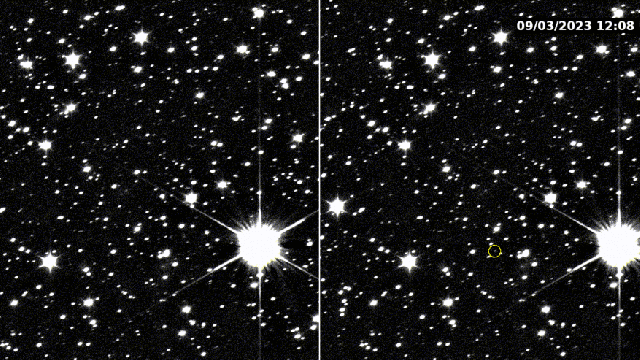The Lucy spacecraft is on a 12-year journey to visit eight different asteroids, and it’s almost caught up with the first space rock on its checklist.
Since it launched in October 2021, NASA’s Lucy mission has trekked through over 33 million miles (54 million kilometres) in space. The spacecraft is now 4.7 million miles (7.6 million km) away from its first target, a small asteroid named Dinikinesh. As the asteroid orbits around the Sun, however, Lucy needs to travel another 16 million miles (25 million kilometres) to finally rendezvous with Dinikinesh on November 1, according to NASA.
Over the past month, the team behind the mission has noticed the asteroid increasing in brightness as Lucy catches up to it. Lucy got its first glimpse of its asteroid target on September 3, and has been inching its way closer to Dinikinesh ever since. The spacecraft has been capturing a series of images using its high-resolution camera, L’LORRI, as part of its optical navigation program. In order to determine the relative position of the spacecraft and its target, the optical navigation program uses the asteroid’s apparent position against the star background to ensure an accurate flyby.
Using this information, the spacecraft carried out a small trajectory correction maneuver on September 29 that altered its speed by around 0.1 miles per hour (6 centimeters per second), according to NASA. This subtle nudge will set Lucy on a flyby path that will pass within 265 miles (425 kilometres) of the asteroid. The team will have another opportunity to adjust the spacecraft’s trajectory in October if needed.
Lucy went through a brief communications blackout from October 6 until mid-October as the spacecraft passed behind the Sun as viewed from Earth. During that time, the mission was still diligently capturing images of the asteroid, which will be sent to Earth once communication with Lucy is reestablished.
Dinikinesh is a tiny space rock in the main asteroid belt, only about a half-mile wide (1 kilometre). The asteroid was recently added to the mission’s itinerary as a way to test the spacecraft’s terminal tracking system, which is used for precise imaging during its high speed encounters with the asteroids.
Lucy will begin its tour of the Trojan asteroids in 2027 by visiting Eurybates and its binary partner Queta, followed by Polymele and its binary partner, Leucus, Orus, and the binary pair Patroclus and Menoetius. The Trojans are a group of asteroids that lead and follow Jupiter as it orbits around the Sun.
The mission is named after the famous Australopithecine fossil found in 1974, while Dinikinesh, or ድንቅነሽ in Amharic, is the Ethiopian name for the human-ancestor fossil that’s also known as Lucy. The asteroid was discovered in 1999 but was left unnamed until it was selected as a target for the mission in January.
